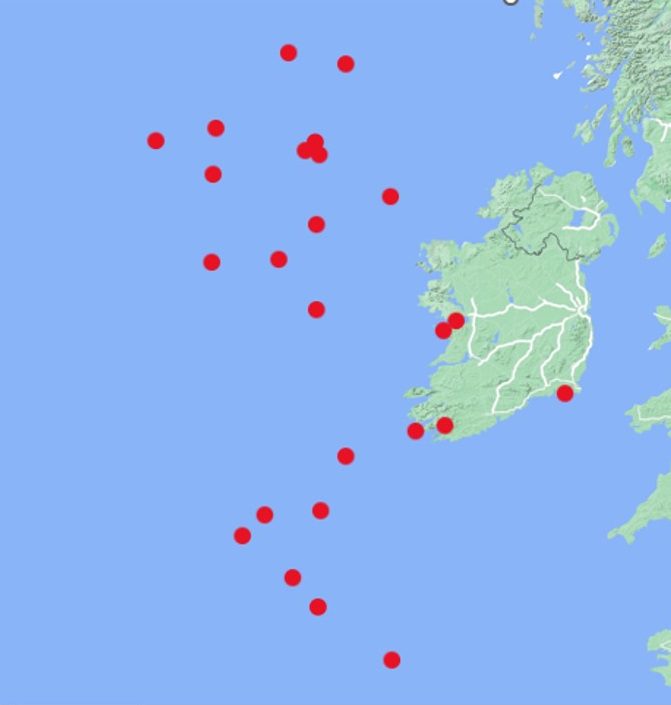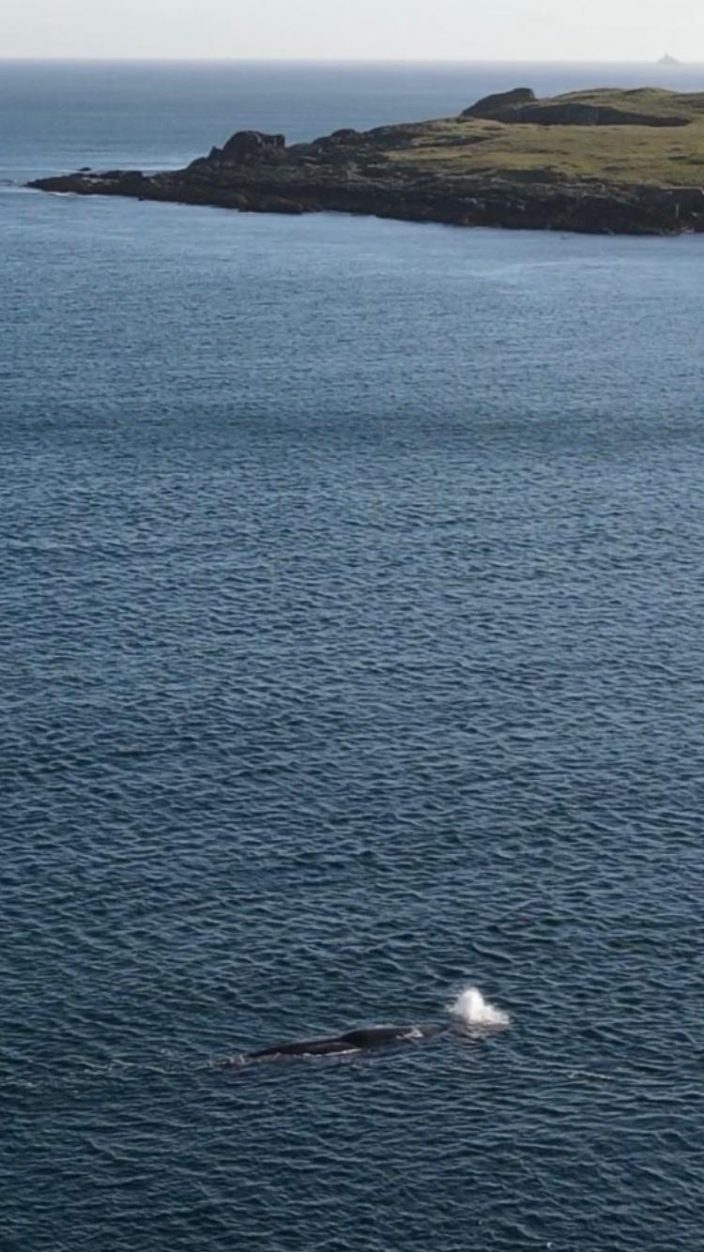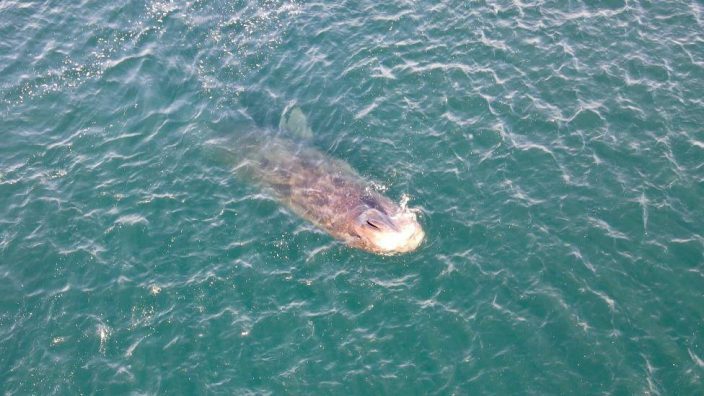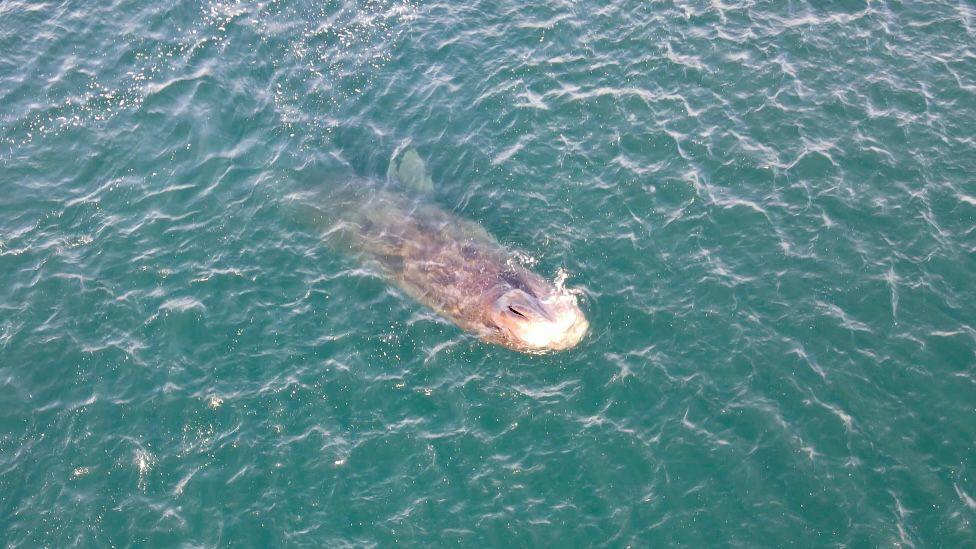Pádraig Whooley, IWDG sightings officer examines the recent rare sperm whale sighting in Dursey Sound, Co. Cork.
Sperm whales are the largest of the toothed whales and were the species portrayed as the villain of the piece in Herman Melville’s classic novel “Moby Dick“.
I’ve seen sperm whales several times in Irish waters, but they’ve almost always been rotting specimens on local west Cork beaches; alas the only live sperm whales I’ve seen were off Kaikoura in South Island New Zealand way back in 1996. So why’s that?
While they are relatively common in deep waters off Ireland’s Continental Shelf, their forays into coastal waters are extremely rare, largely because our shallow shelf waters provide neither suitable habitat for them or their preferred prey, which are deep diving squid. So a healthy sperm whale that spends extended periods of time in our shallow waters, runs a high risk of starving to death.
Our working hypotheses is that healthy specimens remain offshore and will therefore pass largely undetected by the

Sperm whale sighting records to date in Irish waters n=25
IWDG’s sighting scheme, where most watch effort is concentrated within 20 km of the coast. The map attached shows the distribution of all 25 validated sperm whale sightings recorded to date by IWDG, which include this weeks visitor. You’ve to go back as far as Sept. 2017 for the previous record, which was off the Rockall Trough. Of the inshore sightings, some of these were linked with strandings, resulting in the animal’s death.
Acoustic monitoring shows that sperm whales are likely to be more abundant than we might think, and this is borne out by studies in offshore deep water, where deployed hydrophones (underwater microphones) can easily detect their complex arrays of echolocation clicks, which makes them a lot more audible than visible. So unless you are fortunate enough to find a resting individual or group of sperm whales logging on or near the surface, without a hydrophone you are likely to be unaware of this giant’s presence, as they can dive to depths of 3km, for extended periods of up to 2 hrs duration. All of this makes the odds of detections very low and so when it comes to sperm whales, “rarely sighted” does not equate to their being “rare”.
 So what was this solitary adult doing in Dursey Sound throughout Monday 20th….the latest reports suggest it was in the Sound all day between 09:20am till 21:30? Our initial assumption was that it was likely to be in poor condition and that a stranding was imminent. However, this may not have been the case and the drone footage captured by Fintan Harrington didn’t suggest an animal in poor condition. Those who watched it till failing light, say it headed back out past Crow Head towards open water, and there have thankfully been no further re-sightings or indeed strandings reported to IWDG; so this one may just have to remain a mystery. There is always the possibility that it was drawn to the unusually deep water in Bantry Bay, which over the decades has played host to many deep diving odontocetes.
So what was this solitary adult doing in Dursey Sound throughout Monday 20th….the latest reports suggest it was in the Sound all day between 09:20am till 21:30? Our initial assumption was that it was likely to be in poor condition and that a stranding was imminent. However, this may not have been the case and the drone footage captured by Fintan Harrington didn’t suggest an animal in poor condition. Those who watched it till failing light, say it headed back out past Crow Head towards open water, and there have thankfully been no further re-sightings or indeed strandings reported to IWDG; so this one may just have to remain a mystery. There is always the possibility that it was drawn to the unusually deep water in Bantry Bay, which over the decades has played host to many deep diving odontocetes.
Of course there will no doubt be lots of IWDG members and whale enthusiasts glassing the sea and combing the rocky shoreline for further sightings and we’ll keep you posted if it resurfaces. This was certainly one whale sighting for Dursey that Joanna Scott would have greatly enjoyed…..perhaps she did!
In memory of Joanna Scott, who along with her husband Derek, spent years watching, recording and reporting whale and dolphin activity from their Dursey home at Tillickafinna.
We’d like to thank Penny Durell for reporting this sighting to IWDG and Fintan Harrington for allowing IWDG replicate his images and video.

Sperm whale drone images Dursey Sound, 20th June courtesy of Fintan Harrington

